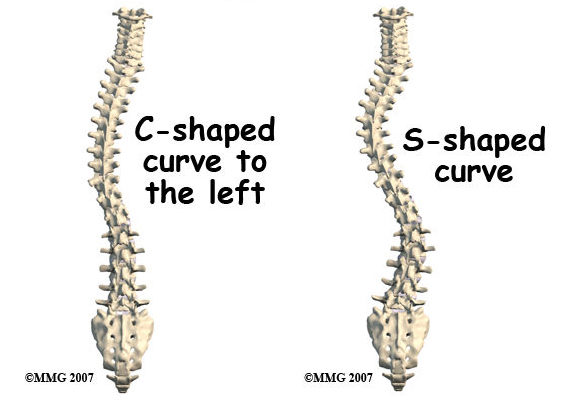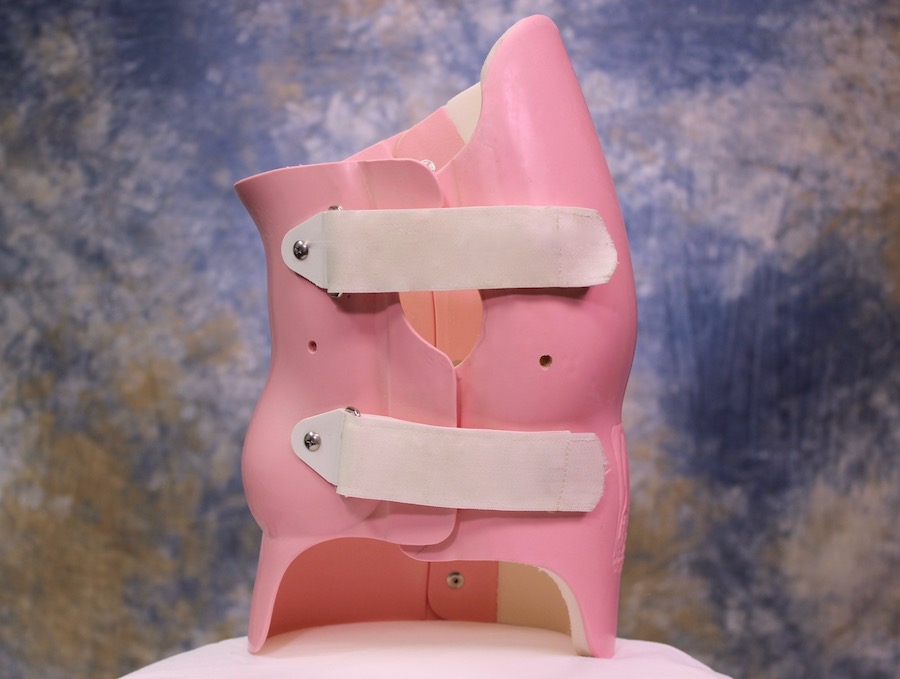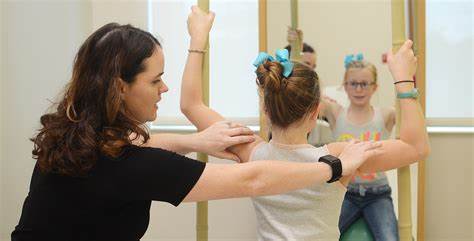Spinal deformities are common skeletal disorders that affect the lives of thousands of people. These deformities include abnormal curvatures such as scoliosis, kyphosis, and lordosis, which can be congenital or develop due to factors like age, posture issues, or other health conditions. Regardless of the cause, spinal deformities can lead to significant physical discomfort and functional impairments.
In the early stages of the disease, treatment can effectively control the progression of deformities and prevent further damage. Additionally, early treatment can help patients alleviate pain, improve posture, and enhance their quality of life.
With the continuous advancement of medical technology, treatment options for spinal deformities are also evolving. Modern medicine offers various treatment options, including bracing, physical therapy, and surgical interventions. Furthermore, innovative methods such as minimally invasive surgical techniques and custom orthotic devices are providing more personalized and effective treatments. Understanding these options and their advantages and limitations is crucial for patients and healthcare providers alike.
Understanding Spinal Deformities
Types of Spinal Deformities
Spinal deformities encompass a range of abnormalities, with the most common types being scoliosis, kyphosis, and lordosis. Scoliosis refers to a lateral “S” or “C” curve of the spine, typically occurring during adolescence but can also develop in adulthood. Kyphosis involves a backward curvature, forming a rounded back, commonly seen in older adults or those with prolonged poor posture. Meanwhile, lordosis is an excessive forward curvature, often observed in young adults.

Causes and Risk Factors
The causes of spinal deformities are diverse and include genetic factors, abnormal growth, muscle or ligament imbalances, congenital defects, trauma, or other conditions. Risk factors include prolonged poor posture, lack of exercise, malnutrition, and muscle weakness, all of which may increase the likelihood of developing spinal deformities.
Impact on Quality of Life
Spinal deformities significantly impact patients’ quality of life. Besides causing physical discomfort and pain, they may affect posture, mobility, and self-confidence. During adolescence, deformities can lead to psychological and social issues, affecting self-image and relationships. In adults, spinal deformities may restrict daily activities, impacting work and overall quality of life [1][2].
Traditional Spinal Deformity Treatment Methods
Bracing and Physical Therapy
Bracing and physical therapy are common non-surgical treatment methods for spinal deformities. Bracing involves applying continuous pressure to gradually correct spinal deformities, particularly in scoliosis cases. Physical therapy includes exercises, traction, and massage techniques aimed at strengthening the muscles around the spine, improving posture, and relieving pain [3].

Surgical Intervention
For severe spinal deformities, surgical intervention may be necessary. Surgery is used to correct significant deformities, alleviate pain, and improve function. Procedures may include spinal fusion, implantation of rods and screws, and more. Although surgery can yield significant improvements, it also carries risks and requires a careful evaluation by both patients and physicians [4][5].
Limitations and Challenges
Despite traditional treatment successes, they have limitations. Bracing requires long-term commitment and may not be effective for all patients. The effectiveness of physical therapy can vary, and adherence is key. Surgical intervention comes with risks and may require a lengthy recovery [6].
Advancements in Spinal Deformity Treatment
Minimally Invasive Surgical Techniques
With advancements in technology, minimally invasive surgical techniques are increasingly utilized. Compared to traditional open surgeries, these techniques offer reduced trauma, less blood loss, and quicker recovery. Minimally invasive procedures use small incisions and advanced equipment like microscopes or endoscopes, allowing precise corrections with minimal tissue damage [7][8].
Custom Orthotic Devices
Custom orthotic devices are personalized braces designed for specific patient needs, providing more effective support and correction than off-the-shelf options. These devices are often created using 3D scanning and other advanced techniques to ensure a perfect fit and maximum comfort [9][10].
Rehabilitation and Pain Management Strategies
Rehabilitation and pain management are integral to spinal deformity treatment. Rehabilitation includes physical therapy modalities like exercises, stretching, and massage to enhance muscle strength, posture, and pain relief. Additionally, pharmacological and non-pharmacological treatments such as acupuncture and physical therapy can help manage discomfort [11][12].

Forethought Medical: Revolutionizing Spinal Deformity Treatment
Forethought Medical is committed to advancing spinal curvature treatment. As an industry leader, they develop innovative medical technologies and solutions aimed at improving patient outcomes and quality of life. With a team of medical experts and engineers, Forethought Medical focuses on developing advanced spinal deformity treatment methods.
The company offers cutting-edge detection technologies, including advanced imaging techniques and AI-based analysis tools. These tools assist physicians in accurately diagnosing and assessing deformities, enabling personalized treatment plans [13][14].
Forethought Medical’s comprehensive treatment options include both surgical and non-surgical approaches, such as minimally invasive techniques, custom orthotic devices, and rehabilitation strategies. They tailor treatments based on individual patient needs, optimizing symptom management and overall quality of life [15].
References
- [1] Weinstein SL, Dolan LA, Cheng JC, et al. “Adolescent idiopathic scoliosis.” The Lancet. 2008;371(9623):1527-1537. doi: 10.1016/S0140-6736(08)60658-3.
- [2] Negrini S, Donzelli S, Aulisa AG, et al. “2016 SOSORT guidelines: Orthopaedic and rehabilitation treatment of idiopathic scoliosis during growth.” Scoliosis and Spinal Disorders. 2018;13:3. doi: 10.1186/s13013-018-0175-8.
- [3] Trobisch P, Suess O, Schwab F. “Idiopathic scoliosis.” Dtsch Arztebl Int. 2010;107(49):875-883. doi: 10.3238/arztebl.2010.0875.
- [4] Hresko MT. “Clinical practice. Idiopathic scoliosis in adolescents.” New England Journal of Medicine. 2013;368(9):834-841. doi: 10.1056/NEJMcp1209063.
- [5] Bettany-Saltikov J, Weiss HR, Chockalingam N, et al. “Surgical versus non-surgical interventions in people with adolescent idiopathic scoliosis.” Cochrane Database Syst Rev. 2015;2015(4). doi: 10.1002/14651858.CD010663.pub2.
- [6] Lonstein JE, Carlson JM. “The prediction of curve progression in untreated idiopathic scoliosis during growth.” J Bone Joint Surg Am. 1984;66(7):1061-1071. doi: 10.2106/00004623-198466070-00008.
- [7] Kaspiris A, Grivas TB, Weiss HR, Turnbull D. “Scoliosis: Review of diagnosis and treatment.” International Journal of Orthopaedics. 2013;37(1):34-42. doi: 10.1038/s41390-020-1047-9.
- [8] Monticone M, Ambrosini E, Cazzaniga D, et al. “Active self-correction and task-oriented exercises reduce spinal deformity and improve quality of life in subjects with mild adolescent idiopathic scoliosis: Results of a randomized controlled trial.” Eur Spine J. 2016;25(10):3118-3127. doi: 10.1007/s00586-016-4625-4.
- [9] Kotwicki T, Negrini S, Grivas TB, et al. “Methodology of evaluation of scoliosis, back deformities and posture.” Scoliosis. 2009;4:26. doi: 10.1186/1748-7161-4-26.
- [10] Weiss HR, Negrini S, Rigo M, et al. “Indications for conservative management of scoliosis (guidelines).” Scoliosis. 2006;1:5. doi: 10.1186/1748-7161-1-5.
- [11] Weinstein SL, Ponseti IV. “Curve progression in idiopathic scoliosis.” J Bone Joint Surg Am. 1983;65(4):447-455. doi: 10.2106/00004623-198365040-00014.
- [12] Newton PO, Upasani VV, Farnsworth CL, et al. “Spinal growth modulation with use of a tether in an immature porcine model.” J Bone Joint Surg Am. 2011;93(9). doi: 10.2106/JBJS.J.00827.
- [13] Patel A, Spinal Deformities Treatment Advancements. Clinical Spine Surgery. 2019;32(1):33-38. doi: 10.1097/BSD.0000000000000900.
- [14] Smith JS, Shaffrey CI, Berven S, et al. “Spinal Deformity Surgery in Adults: The Emerging Role of Minimally Invasive Techniques.” Neurosurgery. 2014;74(5):702-714. doi: 10.1227/NEU.0000000000000297.
- [15] Chen AF, Weiss HR. “Clinical effects of brace treatment for spinal deformity.” The Spine Journal. 2012;12(3):89-97. doi: 10.1016/j.spinee.2011.12.018.

